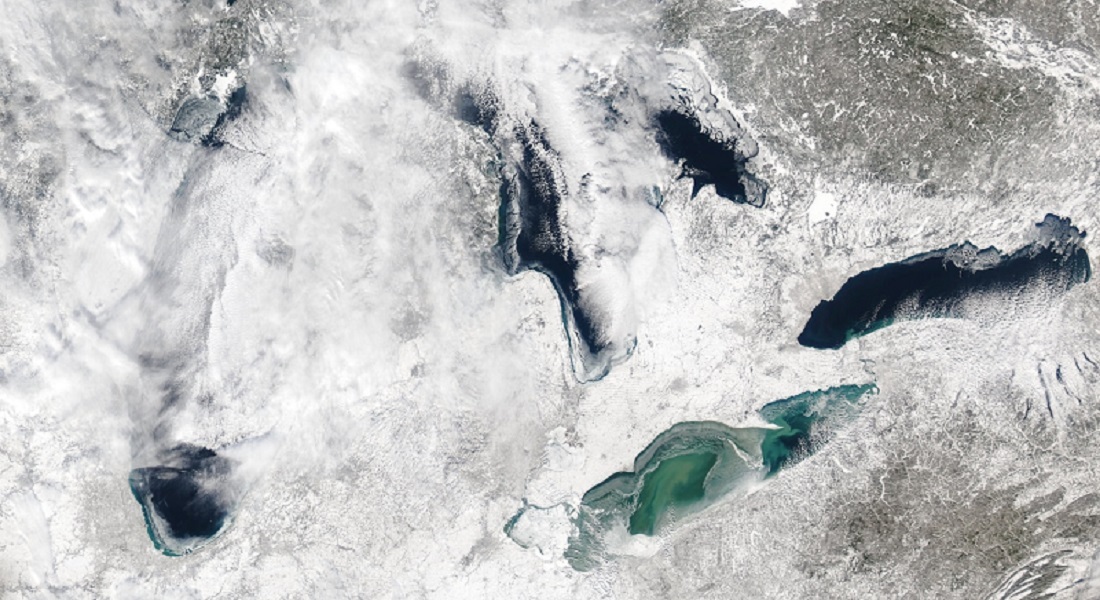
Ice is Nice (but not to walk on)!
Posted on February 11, 2022
Satellite imagery from MLIVE
We love going to the lake in the winter… the light, the snow mixed with the sand, the muted color of the sky, and the awesome ice formations along the shoreline are all stunning. But despite how tempting it may be to explore that ice close up, don’t do it. Looks are deceiving- what appears to be thick, solid ice, might be thinner than you think, floating on moving water, or it may have weak spots that are invisible to you.
We’ve had a colder than normal January and early February (today aside), so the shoreline ice cover is building quickly. But MLive’s meteorologist Mark Torregrossa posted some satellite images of the Great Lakes this week to show just how dangerous and unstable this shoreline ice can be. Our Great Lake is a little hard to see in the photo above, since it has been so cloudy the last few weeks, but if you look at the southwestern shoreline by Chicago, you can see how broken up that ice is.
A better image is of Lake Erie:

Erie is pretty shallow and narrow relative to the other Great Lakes, so it tends to freeze the most solid. But look at that shoreline! Lots of open water for that ice to break into. In fact, last week 18 people had to be rescued after a large ice sheet on Erie broke off and trapped them on the floating chunk. No thanks!
Torregrossa says that the wind direction make the difference between ice that is visibly unsafe, and ice that looks safe, but is not. On the western shores, like in Chicago or the other side of Michigan on Lake Huron, a northeast wind in front of a storm system can spell trouble. The northeast wind packs the ice around the shoreline. Then the storm will typically bring a west wind, which blows that ice back out into open water. Here on the east side of things, we have another danger: ice volcanos. Over here that west wind piles the ice up on the shoreline… but underneath, the waves are still rolling. If you listen, you can often hear the water sloshing around under there. The waves create a void under the ice, making for a weak spot—one you can’t see—that could break off or open up at any time. When holes do open up, sometimes the water shoots up through them, hence their name.
Bottom line- definitely go out and see the awesome ice formations happening on Lake Michigan right now… but look from afar.






















